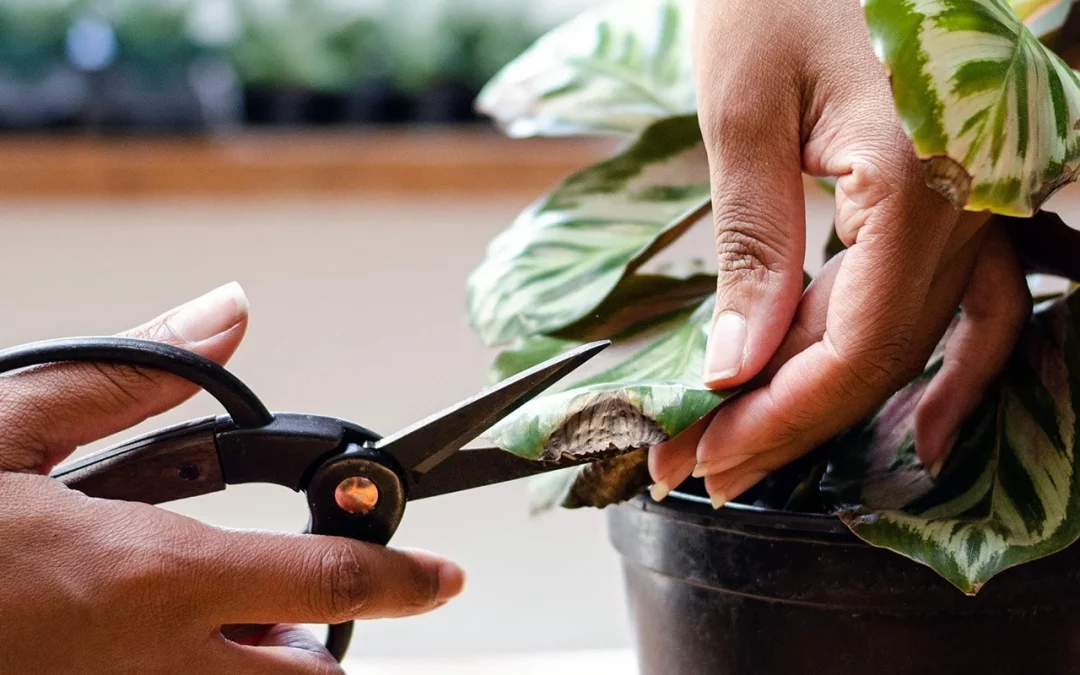Contents
- 1 How to Prune Indoor Plants (Beginner’s Guide to Healthier Growth)
- 1.1 Why Pruning Indoor Plants Is Important
- 1.2 Tools You’ll Need
- 1.3 How to Prune Indoor Plants Step by Step
- 1.4 Best Plants to Prune Indoors
- 1.5 Seasonal Pruning Tips for Indoor Plants
- 1.6 Using Pruned Cuttings for Propagation
- 1.7 Common Mistakes to Avoid
- 1.8 FAQ on Indoor Plant Pruning
- 1.9 Related Articles
- 1.10 Final Thoughts on Pruning Indoor Plants
How to Prune Indoor Plants (Beginner’s Guide to Healthier Growth)
Pruning isn’t just for outdoor gardens—your indoor plants need it too. Regular pruning keeps houseplants looking neat, encourages new growth, and helps prevent pests and diseases. The best part? It’s simple once you know the basics.
In this guide, we’ll cover why pruning matters, the tools you need, how to prune step by step, and common mistakes to avoid.
Why Pruning Indoor Plants Is Important
Pruning isn’t just about appearance. It plays a major role in plant health:
Encourages new growth – Removing dead or leggy stems helps plants produce fresh leaves.
Prevents pests and disease – Dead foliage can attract pests and harbor fungal spores.
Improves air circulation – Thinning crowded stems reduces the chance of mold.
Shapes your plant – Keeps growth balanced and prevents one-sided leaning.
Tools You’ll Need
The right tools make pruning easier and safer for your plants:
Sharp pruning shears – A clean cut prevents plant damage.
👉 Check these precision pruning shears on Amazon.Disinfectant wipes/alcohol – Always clean blades to stop spreading disease.
Gloves – Helpful for plants with sap or thorns.
How to Prune Indoor Plants Step by Step
- Identify what needs cutting
Look for yellow, dead, or damaged leaves first. Then spot leggy stems that have grown too long. - Make a clean cut
Cut just above a leaf node (where a leaf meets the stem). This encourages branching. - Thin crowded growth
Remove a few stems in bushy plants to allow better airflow. - Trim for shape
If your plant looks uneven, trim longer stems to balance its shape. - Dispose of cuttings properly
Don’t leave trimmings in the pot—they can rot and attract pests.
Best Plants to Prune Indoors
Some houseplants benefit more than others from regular pruning:
Pothos and Philodendrons – Encourages bushier vines.
Ficus (Weeping Fig, Rubber Plant) – Keeps shape controlled.
Peace Lilies – Remove old blooms and yellowing leaves.
Herbs (Basil, Mint, Oregano) – Frequent pruning keeps them productive.
Seasonal Pruning Tips for Indoor Plants
While you can remove dead leaves year-round, heavier pruning should be timed with growth cycles:
Spring – Best time for heavy pruning since plants are actively growing. Great for reshaping or reducing size.
Summer – Light trimming to control growth or encourage bushiness.
Autumn – Focus on removing weak or leggy stems before slower winter growth.
Winter – Only prune dead or diseased leaves. Most houseplants are semi-dormant, so avoid stressing them with major cuts.
By timing your pruning, you maximize plant recovery and regrowth.
Using Pruned Cuttings for Propagation
One of the best parts of pruning is that many cuttings can be reused to grow new plants. Instead of discarding them:
Vining plants (Pothos, Philodendrons, Tradescantia) – Place cuttings in water until roots form, then pot in soil.
Herbs (Basil, Mint, Oregano) – Propagate cuttings in water or soil to create fresh batches for cooking.
Succulents – Allow trimmed leaves to callus, then plant in sandy soil for new growth.
This makes pruning both a maintenance task and a way to expand your indoor jungle for free.
Common Mistakes to Avoid
Over‑pruning – Never remove more than 25–30% of a plant at once.
Cutting too close to the stem – Always leave a small stub to avoid stem rot.
Ignoring tool hygiene – Dirty shears can spread fungus and bacteria.
Pruning at the wrong time – Most indoor plants respond best in spring/summer during active growth.
FAQ on Indoor Plant Pruning
Q: How often should I prune my houseplants?
Most plants benefit from light pruning every 1–2 months. Heavy pruning should be done once or twice a year.
Q: Can I propagate cuttings after pruning?
Yes! Many cuttings (like pothos or philodendron) can be rooted in water or soil.
Q: Should I prune in winter?
Light trimming is fine, but save heavy pruning for active growing seasons.
Related Articles
Final Thoughts on Pruning Indoor Plants
Pruning is one of the simplest yet most powerful things you can do for your houseplants. By removing old growth and shaping plants carefully, you’ll encourage healthier growth, reduce pest problems, and enjoy more attractive greenery indoors.
It doesn’t take long—just a few minutes every month with clean shears can transform your plant collection. Plus, with seasonal pruning and propagation, you can enjoy both stronger plants and brand-new ones without spending extra money.
🌱 For more practical pruning advice, check the Royal Horticultural Society’s pruning guide.

